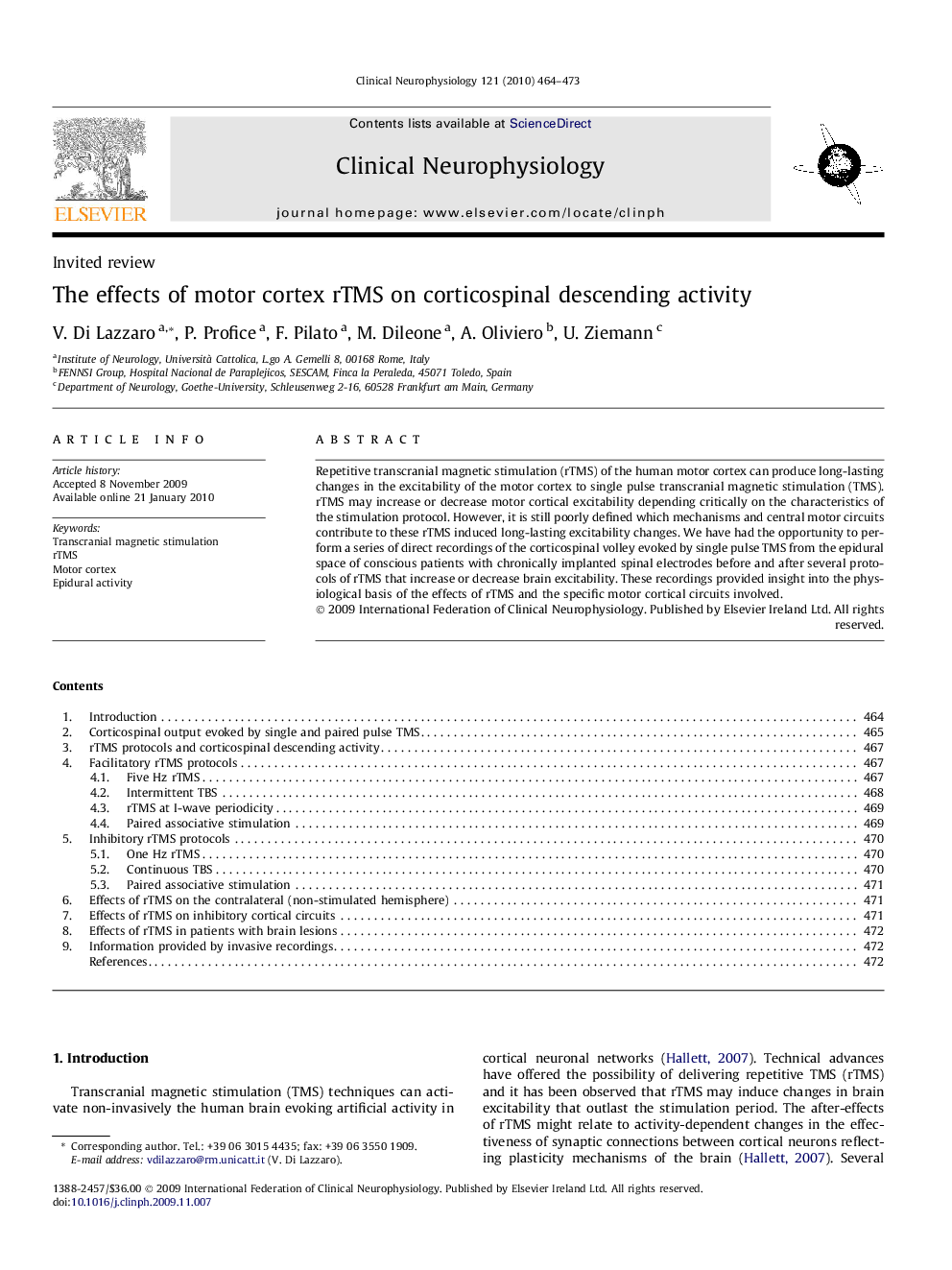| Article ID | Journal | Published Year | Pages | File Type |
|---|---|---|---|---|
| 6009186 | Clinical Neurophysiology | 2010 | 10 Pages |
Abstract
Repetitive transcranial magnetic stimulation (rTMS) of the human motor cortex can produce long-lasting changes in the excitability of the motor cortex to single pulse transcranial magnetic stimulation (TMS). rTMS may increase or decrease motor cortical excitability depending critically on the characteristics of the stimulation protocol. However, it is still poorly defined which mechanisms and central motor circuits contribute to these rTMS induced long-lasting excitability changes. We have had the opportunity to perform a series of direct recordings of the corticospinal volley evoked by single pulse TMS from the epidural space of conscious patients with chronically implanted spinal electrodes before and after several protocols of rTMS that increase or decrease brain excitability. These recordings provided insight into the physiological basis of the effects of rTMS and the specific motor cortical circuits involved.
Related Topics
Life Sciences
Neuroscience
Neurology
Authors
V. Di Lazzaro, P. Profice, F. Pilato, M. Dileone, A. Oliviero, U. Ziemann,
